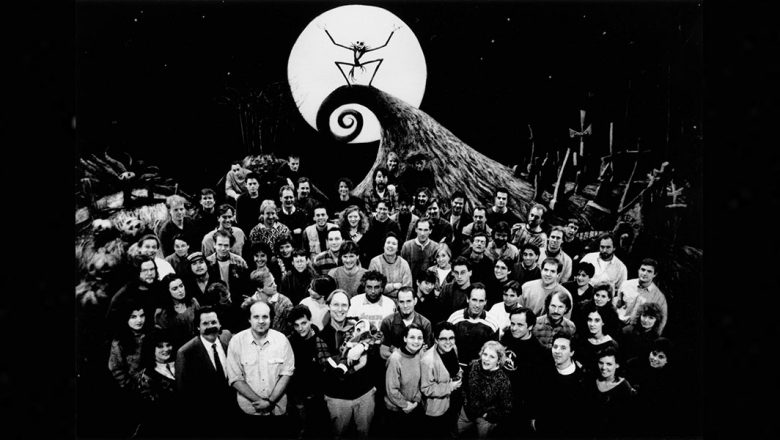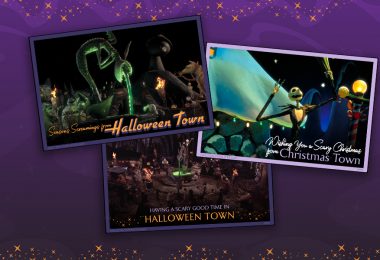By Justin Arthur
A quarter century after Tim Burton’s The Nightmare Before Christmas made its debut, the D23 team caught up with some of the delightfully twisted minds who brought the holiday classic to life. These “masters of fright” were kind enough to regale us with some bewitching memories from the making of the film. Let’s return to Halloween Town, shall we?
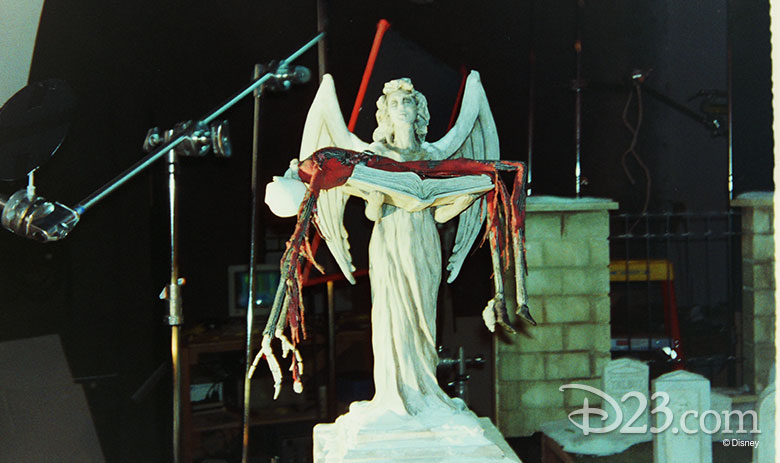
Edie Ichioka, Associate Editor
T’was a long time ago; longer now than it seems….
My favorite memory from working on Tim Burton’s The Nightmare Before Christmas was the amazing physical sets and puppets that were crafted for the show. I did not envy the Cirque de Soleil-style contortions that were required of the animators to negotiate the gorgeous, massive sets; whether they popped up through hidden hatches in the “ground” or were suspended over the set on a plank to pose their puppets 24 times for every second of completed animation.
Animators had to wrestle with the gigantic Oogie Boogie puppet to get each precise pose under black lights (they wore special goggles for this part of the shoot). They endured the chill of winter and intense heat of summer (augmented by hot lights) on the warehouse stages.
I got to watch each step from the safety of editing where, each day, I would unwind a small spool of 35mm work print and examine how the team was able to breathe life into their collection of Barbie dolls gone wrong.
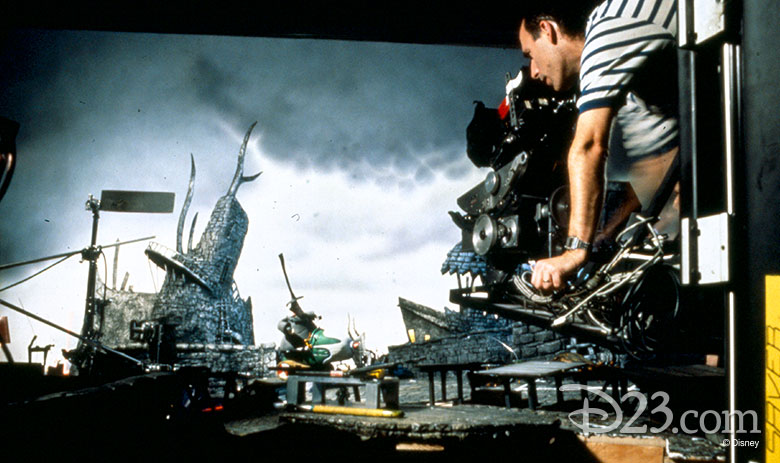
Mike Belzer, Animator
The first group of shots I animated on were for the “What’s This” sequence. It was an exciting time to work on this stop-motion film with these amazing puppets on these beautiful sets. I remember setting up the first shot of Jack dancing around the snowman and noticing something odd happening to Jack. In stop-motion it is crucial that everything is locked off and steady so it doesn’t bump around when playing back the shot. As I got close up to Jack to move him, I noticed that he was shaking from time to time. It turns out that up the block, they were constructing a building where they were pile driving these huge steel girders into the ground. Each time they pounded the girder it shook the whole neighborhood. I freaked out, [wondering] “How can we make a stop motion film with this going on?” I remember bringing Henry to the set to look at the “problem” and seeking his thoughts. He watched Jack shaking, settling, shaking again, settling, and so on, then very calmly looked to me and said, “Take the frame when Jack stops shaking.” It worked! Fortunately, the pounding into the ground didn’t last but a week or two and all was great moving forward. So, if you look carefully at the “What’s This” sequence, you may notice a little soft motion blur around some of the characters where perhaps we didn’t expose the frame at the right time.
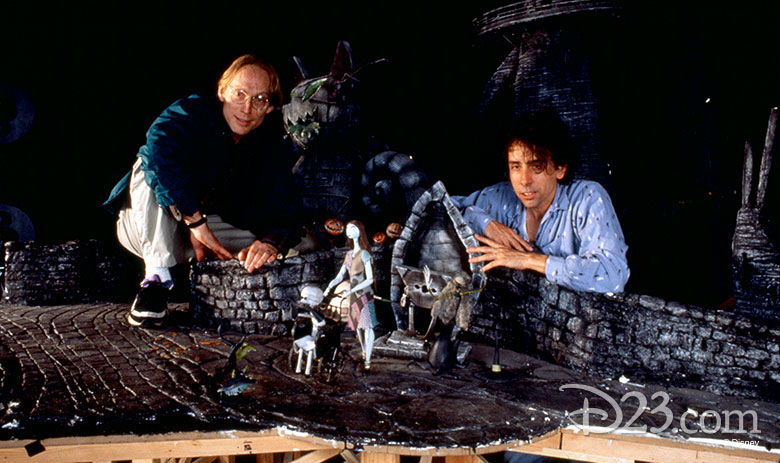
Caroline Thompson, Screenwriter
My favorite memory of working on The Nightmare Before Christmas is probably my first memory. I was brought on board to write fairly late in the process. Danny Elfman had composed all the songs. Lock, Shock, and Barrel’s song, “Kidnap the Sandy Klaws,” was already in production. But they still did not have a script.
Director Henry Selick invited me up to the studio in San Francisco. The production had hired animators from all over the world to imagine Halloween Town characters. The huge space was plastered all over the place with fabulous images.
One image in particular caught my eye. It was of a little man with lips like a duck, wearing rubber gloves and a white gown. He was sitting in a wheelchair. And he had flipped the lid on the top of his head and was scratching his exposed brain. Right then and there, Sally’s story came into focus and Dr. Finkelstein was born…
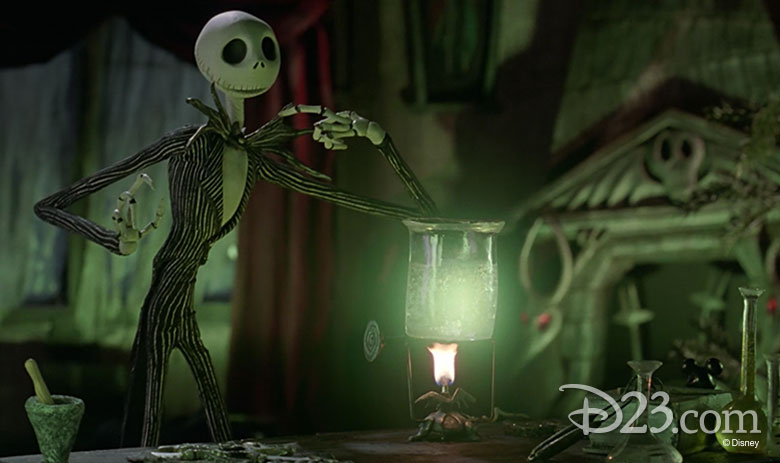
Anthony Scott, Animator
Early on during animation production, I animated several scenes of Jack performing experiments. The last shot of the sequence featured Jack crushing an ornament into a beaker of glowing liquid. However, he remained frustrated that he couldn’t figure out Christmas using science. In the shot, the table he was working on was covered with books, chemistry flasks, test tubes, and…a Mickey Mouse head! I had a small Mickey toy in my tool kit, I think it was a part of a mechanical pencil, and I thought it would be fun to hide it on the table amongst the other props. This was before I knew what a Hidden Mickey was, but I thought since this was a Disney film, it would be a cool subtle nod. Henry [Selick] was cool with it, and it made it into the final film!
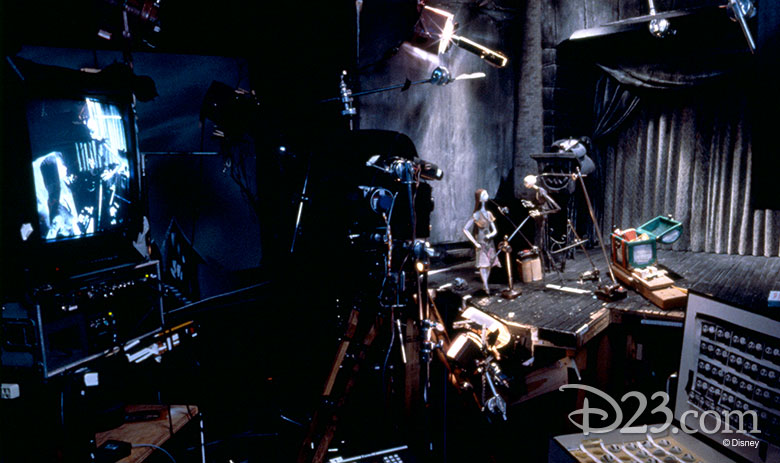
Bill Boes, Assistant Art Director
My favorite memory is building the model for Halloween Town with Rick Heinrichs, Tim Burton’s longtime friend and designer. When the show first started, I was initially hired as a model maker. After a while, Rick saw my model-making skills and asked me to join him upstairs to help him with the design for the initial concept model of Halloween Town. We sat for a month or so, cut up strips of foam core and cardboard, sculpted foam, smeared modeling paste on the buildings, glued twigs together to make trees, and painted it all black to give it the final look we all know and love. I will cherish those times with Rick and the open collaboration that he shared with me back in 1990.
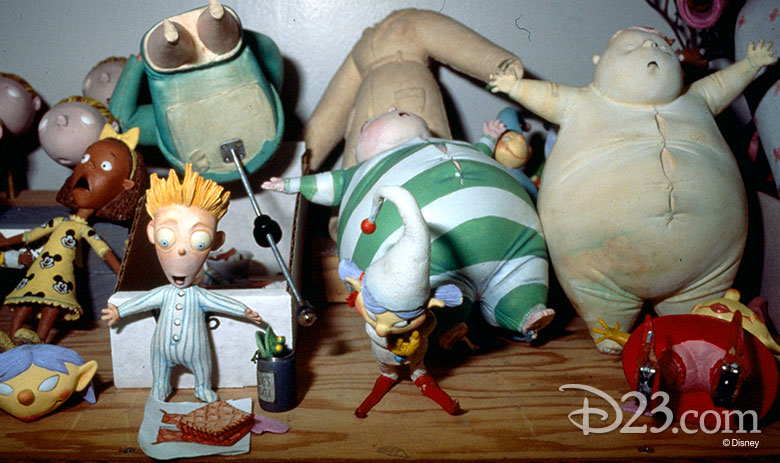
Kelly Asbury, Assistant Art Director
There are so very many amazing and fond memories from my time on Tim Burton’s The Nightmare Before Christmas that it is nearly impossible to narrow them down into one I can call my favorite. Working on Nightmare marked an enduring high point in my career, both artistically and when it came to sharing the experience with so many wonderfully talented and fun co-workers. It was a joyful work experience like none I’ve had since. Prior to my time on the movie, my animation work had been exclusively in the 2-D arena, so imagine my excitement at having my flat drawings being translated by skilled sculptors into 3-D puppet sets. I was simply blown away at the scale and accuracy displayed by all those hard-working artists in the model shop, as they painstakingly crafted an entire world like no other. To this day, I remain humbled by the collective talents who came together to make real what had never existed before. I was out of my league and mesmerized by the entire process of stop-motion animation. I still am.
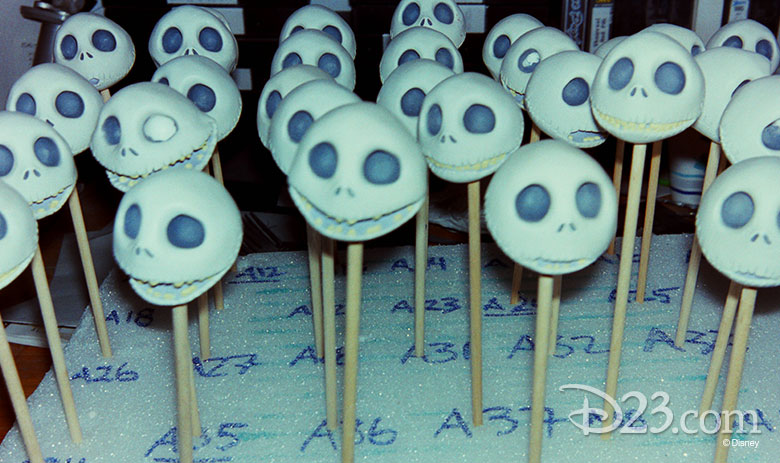
Today, I watch Nightmare and find it difficult to recall what part I actually played in the overall making of the movie. The fact is, my work on the film was but one component of a much bigger picture, for it is the final, tactile, all-encompassing result on screen which truly matters in the end, all brought together under the astute and inimitable “Mad Genius” direction of Maestro Henry Selick, orchestrator of shadows and light; choreographer of the Dance Macabre; conduit to the dark side of our conjoined childhood ids. Henry’s filmic imagery boars itself into the viewer’s brainstem, forever flickering in the deepest recesses of the cerebellum, where it eternally waits… always waits… for the perfect opportunity to strike. And the memories flood once more.
When the day comes, may the final flashes before my dying eyes include the image of a black spiraling hill set against a swirling pen & ink moon.


